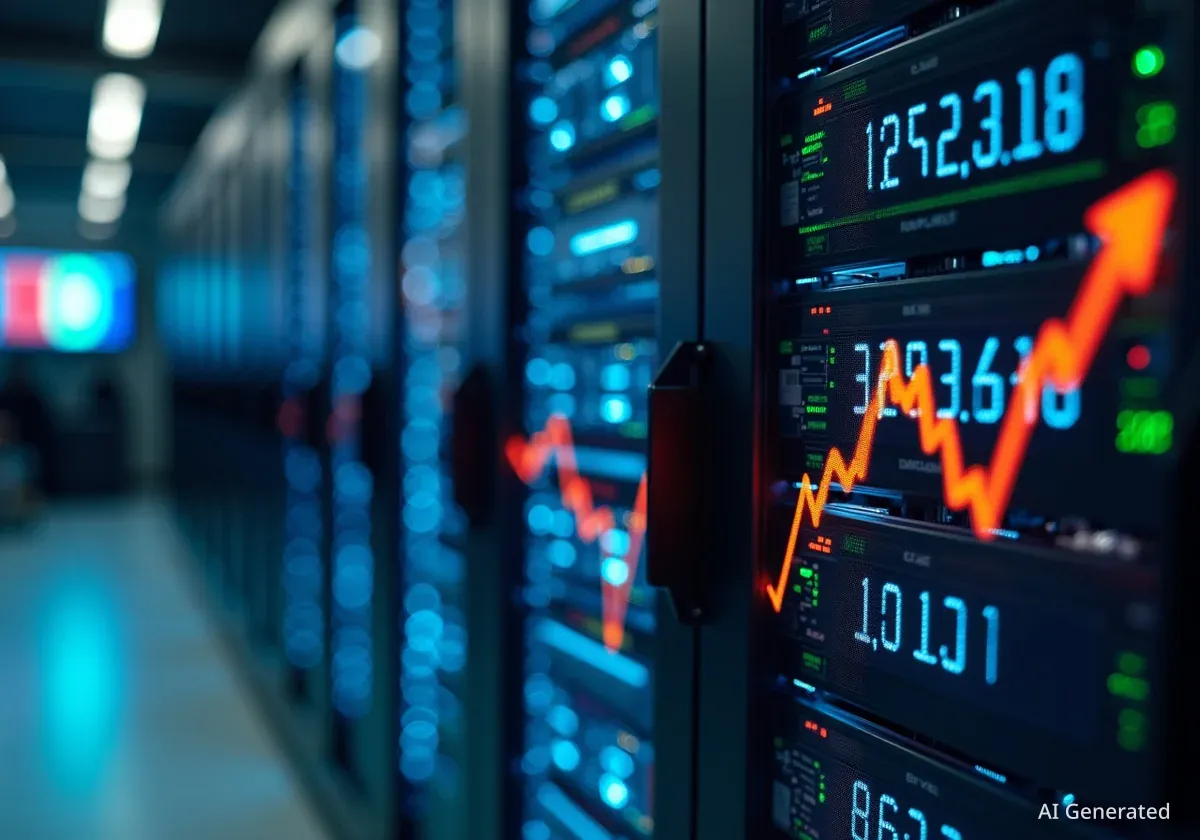The semiconductor industry has experienced a significant surge in 2025, with major stock indices showing substantial gains driven by massive investments in artificial intelligence infrastructure. The Morningstar Global Semiconductors Index has risen 34% this year, more than doubling the performance of the broader U.S. market. However, questions are emerging about whether this rapid pace of growth can be sustained.
While demand for AI-related chips remains high, investors are now considering the potential impact of a slowing growth rate. This concern, known as the "base effect," suggests that as investment levels become larger, maintaining the same percentage increase becomes more difficult, which could affect future stock valuations.
Key Takeaways
- Semiconductor stocks have outperformed the market in 2025, with the Morningstar Global Semiconductors Index up 34%.
- The rally is fueled by a boom in capital spending on AI infrastructure by major technology companies known as hyperscalers.
- Analysts project AI-related investment from hyperscalers will triple to $450 billion by 2027, up from $150 billion in 2023.
- A key risk for investors is the "base effect," where the rate of growth could slow, potentially leading to a market correction for chip stocks.
- Despite short-term volatility, experts believe the long-term demand for AI technology will continue to be a major growth driver for the industry.
Unpacking the AI Investment Boom
The core driver behind the semiconductor rally is the unprecedented capital expenditure on AI technologies. Computer chips, or semiconductors, are fundamental components for everything from smartphones to advanced data centers. The complex calculations required by AI applications demand powerful, specialized chips, leading to a surge in their demand.
Companies at the forefront of this demand are the hyperscalers—large cloud service providers like Microsoft, Alphabet, Amazon, Meta, and Oracle. These firms are building the vast data centers and infrastructure needed to power AI services globally.
Projected Hyperscaler Spending
According to a Morningstar industry report, the combined annual AI investment from these five major hyperscalers is expected to increase from $150 billion in 2023 to $450 billion by 2027. This tripling of investment underscores the scale of the current technology build-out.
This trend extends beyond public corporations. Data from Apollo's chief economist, Torsten Slok, indicates that AI and machine learning have become the leading focus of all venture capital investments in North America, signaling strong confidence from private markets as well.
Market Performance and Key Players
After a period of uncertainty and losses in the spring, the semiconductor sector rebounded strongly during the summer. Industry leaders have posted impressive returns. Broadcom, for example, has seen its stock increase by 47% this year, while Nvidia is up 33%.
Recent corporate announcements have further fueled investor optimism. A strong earnings report from Broadcom revealed a 63% year-over-year increase in its AI chip revenue. Similarly, Oracle's stock jumped 30% in a single month after reporting massive demand for its cloud AI services and data centers.
Strategic Partnerships Shape the Market
Major collaborations are also influencing the market. Nvidia recently announced a $5 billion investment in Intel to jointly develop data centers and chips. Another significant development is the reported $100 billion partnership between Nvidia and OpenAI, the creator of ChatGPT, which sent Nvidia's stock higher.
The industry is composed of various types of companies. Chip designers like Nvidia, Broadcom, and AMD have experienced some of the most significant growth. Meanwhile, manufacturers such as Taiwan Semiconductor (TSM) are essential partners that produce the physical chips.
Future Growth Outlook and Potential Risks
Most market analysts remain positive about the continued growth in AI-related demand. The consensus is that the massive investment cycle is far from over. Brian Colello, a senior equity analyst at Morningstar, stated that demand for AI chips continues to outpace supply.
"We’re still bullish on AI and semiconductors in general, led by Nvidia. We’ve seen no signs of a slowdown in hyperscaler spending. Oracle’s and Meta’s plans, in particular, have been eye-popping."
Analysts project that revenue from AI chips could grow fourfold over the next several years, with a compound annual growth rate of 40% through 2028. This would make AI the single largest driver of growth in an industry that would otherwise expand at a mid-to-high single-digit rate.
The 'Base Effect' Concern
Despite the optimistic outlook, a potential challenge looms: the base effect. As the total dollar amount spent on AI infrastructure grows, maintaining the same high percentage growth rate becomes mathematically more difficult. For instance, growing from $10 billion to $20 billion is a 100% increase, but growing from $100 billion to $110 billion is only a 10% increase, even though the absolute dollar growth is the same.
Morningstar equity analyst Phelix Lee commented on this risk, particularly for semiconductor manufacturers. "AI capex is already in hundreds of billions, so its sheer scale makes it less possible to grow at the same breakneck pace," he explained. "This means earnings of AI stocks are more likely to slow, which isn’t good news for stock prices."
It is important to note that analysts do not predict a decline in spending, but rather a deceleration in the rate of growth. The key for stock performance will be whether actual growth meets the high expectations currently priced into the market.
Navigating an Inherently Cyclical Industry
The semiconductor sector is historically cyclical, characterized by boom-and-bust periods that typically last around four years. These cycles are driven by the time it takes to build new manufacturing capacity in response to shortages, often followed by periods of oversupply when demand shifts.
While the AI boom has created exponential growth for specific products like AI-optimized servers, analysts do not believe it will eliminate the industry's inherent cyclical nature. They advise investors to prepare for a "bumpy ride" over the next few years, even as the overall trend points upward.
Underlying growth for the entire semiconductor market is projected to be between 7.1% and 9.6% annually through 2030, partly supported by sustained AI demand. Within this broader trend, companies with strong competitive advantages, or what analysts call "wide moats," are expected to experience less volatility in their earnings and stock prices throughout the cycles.
Firms expected to benefit broadly from AI-related demand include manufacturing giant TSMC, design software companies like Cadence and Synopsys, and equipment makers such as ASML and ASM International. For now, all signals indicate that the absolute investment in AI will continue to grow, providing a strong tailwind for the entire semiconductor ecosystem.





